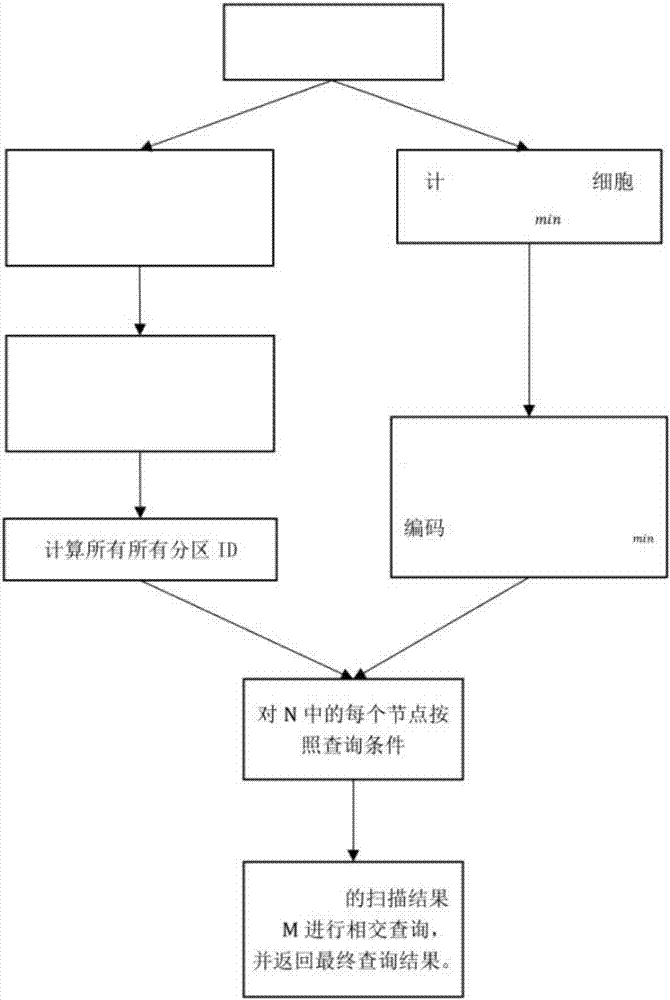Spatio-temporal data indexing method in non-relational database
A spatiotemporal data and database technology, applied in the database field, can solve the problems of inappropriate database, difficult to guarantee index consistency, inappropriate for massive data, etc., to achieve good scalability, meet real-time requirements, and improve storage and query efficiency. Effect
- Summary
- Abstract
- Description
- Claims
- Application Information
AI Technical Summary
Benefits of technology
Problems solved by technology
Method used
Image
Examples
Embodiment 1
[0089] The present invention is based on the New Map software spatial database engine API, utilizes above-mentioned technology to develop the data driver program (hereinafter referred to as NM-TSDE) based on Cassandra distributed NoSQL database. The test environment uses three VMWare virtual machines (1CPU, dual-core, 4G memory, 50GB hard disk, Windows Server 2008 operating system). The comparison test uses the Oracle database and ArcSDE (spatial data geometric information is stored using ST_GEOMETRY objects) on the same computer (CPU 8-core 3.6GHz, 4G memory, 100M Ethernet card), the same network bandwidth (100M Ethernet), the same The storage and query efficiency test was performed under the Oracle database server (CPU 8-core 2.40GHz, 16G memory, 100M Ethernet card).
[0090] The experimental data used the March 2016 vector data provided by Open Street Map (OSM), Japan in Asia, and the format is Shapefile. The data size is 3.29GB, and there are 8 layers in total, including 2...
PUM
 Login to View More
Login to View More Abstract
Description
Claims
Application Information
 Login to View More
Login to View More - R&D
- Intellectual Property
- Life Sciences
- Materials
- Tech Scout
- Unparalleled Data Quality
- Higher Quality Content
- 60% Fewer Hallucinations
Browse by: Latest US Patents, China's latest patents, Technical Efficacy Thesaurus, Application Domain, Technology Topic, Popular Technical Reports.
© 2025 PatSnap. All rights reserved.Legal|Privacy policy|Modern Slavery Act Transparency Statement|Sitemap|About US| Contact US: help@patsnap.com



